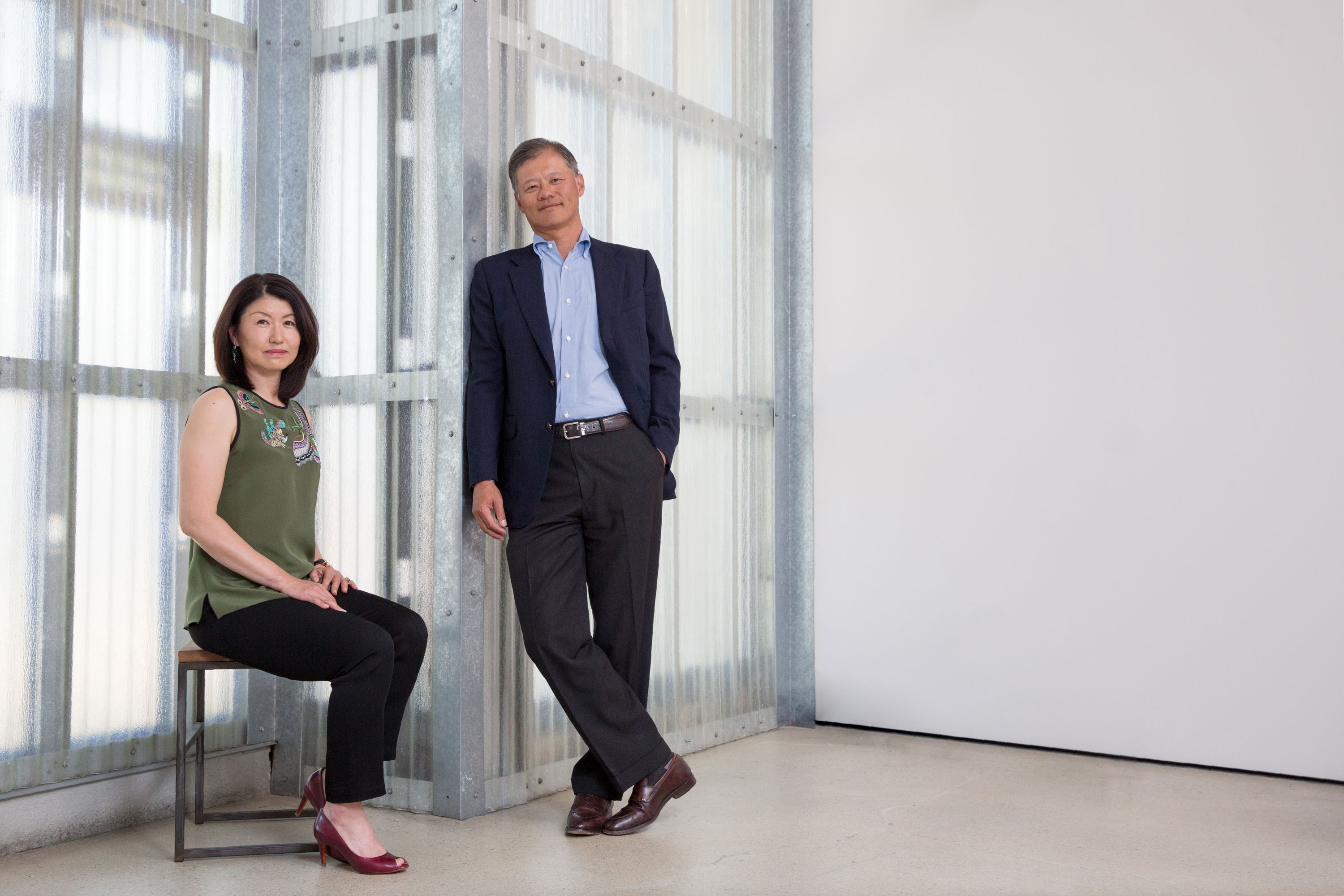
“Technology can extend art, but it doesn’t replace it,” says Jerry Yang, the billionaire co-founder of Yahoo who now has his own “deep tech” venture capital firm. “Museums offer communal experiences and exhibitions have physical ways of telling stories that can’t be captured online.” Yang, a Taiwanese-born American, and his wife Akiko Yamazaki, a Costa-Rican-born Japanese-American, are significant leaders within the Bay Area art world and recently gave $25 million to the Asian Art Museum. A management consultant before she took up full time philanthropy, Yamazaki has been a trustee of the museum for 20 years, chair of the board for the past four, and is now co-chair for a further two-year term. “Art is no longer the purview of the elite,” says Yamazaki. “We are flooded with information about art and artists. Technology is making art more ‘of the people.’”
When art market insiders wonder whether people in Silicon Valley are supporting the arts, they should look to new members of the Asian Art Museum board, which includes the wives of the co-founder of Youtube, an original Google board member, an early senior Facebook executive, and the former CEO of GoPro. “Historically, the museum has had a narrow base of support,” explains Lucy Sun, Yamazaki’s board co-chair. “Akiko brought in savvy tech people and greatly increased the diversity of the group. She has helped bring together a loyal, vibrant community.” Nowadays, the 60-person board is younger and more Asian, with representation now up to about a third. Diplomacy is essential. “I stay away from the ‘versus mentality.’ I don’t like to set antiquities against contemporary art or San Francisco against Silicon Valley,” says Yamazaki. “Part of my job is to make sure that everyone feels respected. And I must credit Jay [Xu, the museum’s director], who is mindful about the inclusivity of our programming.”
The museum is benefitting from the enriched status of Asians in America, having raised $83 million of its $90 million target two years ahead of schedule. Many second and third generation Asian-Americans are affluent while new Asian immigrants to the Bay Area are often top engineers or seasoned entrepreneurs. After Americans, Indians have founded more unicorns (i.e. startups valued at more than a billion dollars) than any other nationality. Given the rise of China in the global economy, I ask Yang whether being Chinese-American in 2018 is an advantage in much the same way that, say, being British was in 1850. “When I was growing up in the 80s, I never thought that being or speaking Chinese would ever be the slightest bit useful,” says Yang with a laugh. “But now it is really convenient. In business settings, you understand nuances that would otherwise elude you.”
“Transformation” is the buzz word at the Asian Art Museum. A new 12,000-square-foot pavilion, containing the largest column-free exhibition space in San Francisco, and an open-air sculpture terrace—also the biggest in the city—are scheduled to open in 2020. “The museum was originally a library, so it lacked flow,” explains Yang. “Soon we’ll have a pavilion to present special exhibitions, liberating the rest of the space for different stories.” Kulapat Yantrasast, an LA-based architect who was born in Bangkok and educated in Tokyo, is famed for his “acupuncture architecture.” Yantrasast is keen to improve the circulation of the museum, reinstate the processional experience offered by the grand central staircase and unblock corridors that are perceived as dead ends. “The new pavilion is not an implant or a plastic surgery,” explains Yantrasast. “The renovation comes from the inside; it re-balances and realigns like acupuncture.”
The pavilion is only part of a deeper initiative to modernize the museum. Refreshingly, the other changes are not about expanding square footage or accumulating objects, but engaging people and improving the curatorial impact of the existing collection. The galleries are being reorganized around 15 masterpieces, including the “338 Buddha,” which is the oldest dated Chinese Buddha in the world, and an extremely rare 3,000-year-old bronze vessel in the shape of rhinoceros. These newly hung rooms will have a lot of richly layered digital content and the museum will expand the attention it gives to contemporary art. Upcoming shows will feature design collective Team Lab in 2020 and, then, in 2023, Japanese Pop Art star Takashi Murakami.
Yamazaki and Yang bring credibility to the museum’s social whirl. “Few people have more institutional knowledge than Akiko,” declares Lucy Sun. “Moreover, she and Jerry are seriously interested in art. They collect things that require connoisseurship, which lends authority to the museum community.” Indeed, Yamazaki has a passion for the simple forms and subtle glazes of Song Dynasty ceramics. Although made between 960–1279, these relatively minimal monochromes look remarkably modern. “You can feel the focus in these pieces,” says Yamazaki. “I love that about them. One can hide a lot of imperfections with heavy decoration. Song ceramics don’t allow for that.”
This summer, the couple lent more than 50 Chinese ink paintings to Stanford’s Cantor Art Center. Yang loves the long history of Chinese calligraphy and ink painting. While he collects in this domain, together the couple acquire works by living artists experimenting in the tradition. “Contemporary Chinese oil painting is a huge scene—a pricier market where hot artists have factories with teams of assistants,” says Yang. “But the ink artists do every stroke themselves. When it comes to liquid pigment on paper or silk, there is no do-over. You can’t fake it.” The authenticity of the genre lies in part in the conviction of its maker. “The artists release their inner energy into these paintings. Their marks flow out very deliberately, without hesitation,” adds Yamazaki. To the uninitiated, the works don’t initially appear all that contemporary, but with more intense scrutiny, they offer up unexpected eccentricities and unusual techniques. “We’re not picking artists out of art school and we’re not collecting Picassos,” Yang says amusedly. “The contemporary artists we acquire are more like growth stage companies.”










 in your life?
in your life?

